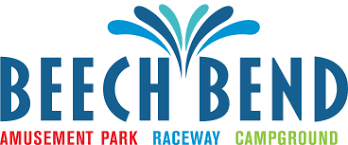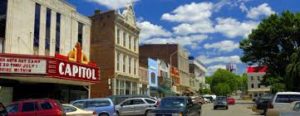
Greetings from Bowling Green, Kentucky
From the travels and adventures of the
“World’s #1 Trackchaser”
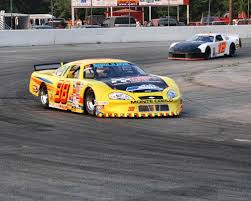
Beech Bend Raceway
Asphalt oval
Lifetime Track #476
.
Beech Bend Raceway
Asphalt figure 8
Lifetime Track #477
Reprinted with permission from my Friday, April 13, 2001, Trackchaser Report.
THE CLASSIC TRACKCHASER REPORT

Editor’s note: This is a CLASSIC Trackchaser Report. What the heck does “Classic” mean? It’s simply a Trackchaser Report that comes from my trackchasing archives. Typically these will be stories from tracks I visited five years or ten years or more ago.
For whatever reason (usually not enough time) it didn’t get posted to my website when I first made the track visit. Often a classic TR will not have a video and/or photo album attached. I didn’t begin producing my YouTube videos until 2009 (YouTube channel: RANLAY). I didn’t begin writing a complete Trackchaser Report until I had seen about 425 tracks. Photo albums were sort of hit or miss during the early years of my trackchasing. Additionally, if you see a website link know that link worked when the TR was originally written. Will it work now? Your guess is as good as mine! Nevertheless, this CLASSIC Trackchaser Report has finally bubbled to the surface and is now available for everyone to see at www.randylewis.org. I hope you enjoy it.

I AM A TRACKCHASER.
My name is Randy Lewis (above – flying high at 14,000 feet in Bolivia). I hail from the sleepy little village by the sea, San Clemente, California. I am a “trackchaser”. I trackchase. Have you ever in your life heard of “trackchasing”? I didn’t think so.
Well, you made it this far. You might as well pour yourself a cold one and take your Trackchasing 101 class. When you finish you’ll have your trackchasing diploma and can then teach your friends about the hobby.
Today’s adventure was one more of the 2,000 trips that have taken me up, down and around the proverbial long and dusty trackchasing trail. If you would like to see where I’ve been and experience those adventures here’s the link:

If you’ve got a question, comment, or whatever please leave it at the bottom of this report. It’s very easy to do. Or you can visit me on Facebook. Thanks!

FOREWORD
Friday, April 13, 2001.
Greetings from on the way to Bowling Green, Kentucky,
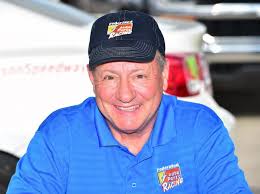
Well, I wasn’t planning to go to Bowling Green today but that’s the way it turned out. The race in Nashville, run earlier today, started later than the original plan. After seeing Kenny Schrader win there the delayed program prevented me from making the 3-hour plus drive to Oneida, Tennessee. Bowling Green, Kentucky was less than 100 miles from the Nashville track. Since I got out of Nashville at 6 p.m. it would be easy to make BG by their 8 p.m. start.
Beech Bend offers some races on Tuesday nights although their normal racing night is Friday. There are not many tracks that race on Tuesdays. I had been hoping to save this track for a future trip when I needed a Tuesday venue. But as you’ve all come to understand in the trackchasing business you have to be able to change plans at the drop of a pin. This is why they have “no U-turn” signs posted all along the interstate. When the plan changes you will frequently see trackchasers making the infamous U-turn across the grassy medium in search of their next new track.
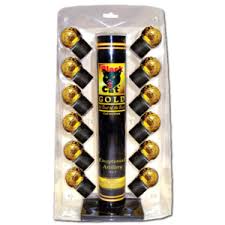
On the way to Bowling Green, it was time to gas up the LeSabre. It just turned out that the gas station also sold firecrackers. In this part of the country that’s not unusual. I had to pick up a few. I settled on the Black Cat Artillery Shells (6 pieces), the color sparklers (72 pieces) and the Hot Shot Roman Candles (6 pieces). Carol won’t like this (George, I’m sure she won’t), but son, Jim, will.
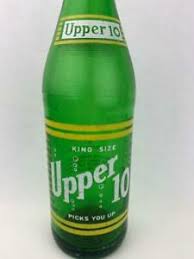
While paying for gas a couple of unusual things happened. First a young man ahead of me ordered an “Upper 10” soft drink. This brand is from the olden days. He ordered it in a GLASS bottle and the cashier opened the bottle with a bottle cap opener attached to the wall. Think about it….when was the last time you’ve seen that? In a nutshell that’s why I’m a trackchaser and a traveler. I want to see things like this! Stuff from the past is just cool.
I was now getting ready to check out and pay for my gas, firecrackers, an early evening snack of WOW cheese flavored potato chips and O.J. (Pryce, this gas station did have “no fat” chips). I eat exactly what I want on these trips!
As readers from my report of two weeks ago know I lost my credit card in Baton Rouge. Today I reached into my hip pocket, no credit card. Side pockets, no credit card. Shirt pocket, no shirt pocket. Panic set in. I might not be able to get those firecrackers! The clerk recognized my behavior for what it was……pure panic. She reminded me I had given her my credit card before I pumped the gas. (Yep. Carol would have killed me and then chopped me up into little pieces).
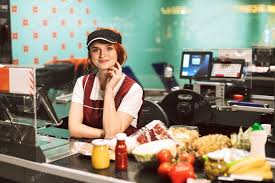
The cashier, a young woman in her 20s, saw this as her opportunity to share her financial theories with me. They primarily centered on why she would never own a credit card for herself. It had a lot to do with spending money she didn’t have, etc., etc. It didn’t seem like a good time to go into the subject of frequent flyer miles.
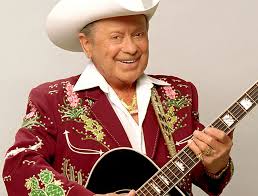
I had only 40 more miles to drive to reach Bowling Green. I was listening to WSM out of Nashville on 650 AM. WSM is the largest country station in the south and the home every Friday and Saturday night of the Grand Ole Opry. If you haven’t seen the Opry live you need too. Tonight featured several old-time country artists including Little Jimmy Dickens (above), Porter Waggoner, Stonewall Jackson and the Riders in the Sky. You can drive all over the south at night and hear WSM from up to 1,000 miles outside of the Music City. This is what I like about America.
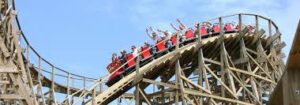
I arrived at Beech Bend Raceway at 8:04 p.m. They have an unusual entrance for the fans. There are two lanes of traffic where you pay from your car. It’s very similar to entering an old drive-in movie. There was a good crowd on hand. This track is located next to the Beech Bend Amusement Park but it was too dark to see much of it. The announcer did say the “big” roller coaster was on order and expected to arrive next week. He allowed that it would take a week to set up and then they would be off to the races….as I was.
Beech Bend is a ¼ mile asphalt track. The entire infield is asphalt. Every square inch inside the track walls is flat asphalt. Today is Good Friday just two days before Easter Sunday. The announcer told the crowd there would be a huge Easter egg hunt at the track on Sunday. With nothing but asphalt, I don’t know where they’re going to hide the eggs!
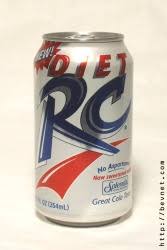
My first stop was to the concession stand. I went with the BBQ sandwich for $3 and Diet Royal Crown for $1. I didn’t hear til later that if I had wanted to wait seven minutes they would cook me up a porterhouse steak. I’ve never heard of a PHS being offered at a racetrack. I wish I had known that!
This track has a lot of classes. They only run features. They started late at 8:45 p.m. No surprise there. Most classes ran 15-20 lap features although the late models raced 30 laps. They started with the Mini Cups and followed with the sportsman, super streets and late models.
When the late models finished it was after 10 p.m. I had seen four features and was planning to head for the exits. I had seen a lot of racing today. I stopped by the photo stand and asked the lady how many races remained. She proudly stated there were SEVERAL more races and the evening would be topped off with the figure 8 races!!
Some of you may know that the official trackchasing sanctioning body has recently recommended and approved the idea that figure 8 races, because they are run on a different “track” than the oval races also count as a separate track for trackchasing totals. I’m not much for this rule. I really wasn’t much for this rule considering that if I wanted to get the Beech Bend figure 8 track I would have to sit through several more classes of racing.
That’s what I did. I watched the Frontrunner class (sort of like mini stocks), which included both their A and the B features. Then it was time for the Street Stocks….both A, B and C features. Along the way I snuck in a corndog for $2 and my own Upper 10 for $1. At about 11:45 p.m. it was time for the figure 8. The massive 11-car field ran a 15-lap race without incident.
Tracks #476 (Beech Bend Raceway-oval) and #477 (Beech Bend Raceway-figure 8) were in the books. Tomorrow night will also see a last-minute change in plans. The Beech Bend track announcer, Jay, is also the promoter at Soggy Bottom Speedway in Morgantown, Kentucky. After receiving my trackchasing note Jay invited me up to the announcing booth where he also invited me to be his guest on Saturday night at Soggy Bottom. So, I’m excited to see the track with such an unusual name.
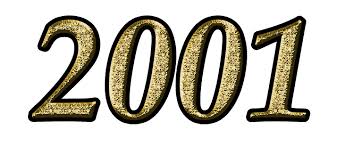
Racetracks visited in 2001
- Laughlin Event Center, Laughlin, NV
- Loc Moran, Mont Carmel, Quebec
- Circuit Jacques Rainville, Vanier, Quebec
- Pauline Davis Pavilion, Red Bluff, CA
- The Pavilion at the Fairgrounds, Chico, CA
- Baton Rouge Raceway, Baker, LA
- Mississippi Motorsports Park, Long Beach, MS
- South Alabama Motor Speedway, Opp, AL
- Nashville Super Speedway, Smyrna, TN
- Beech Bend Raceway (oval track), Bowling Green, KY
- Beech Bend Raceway (figure 8 track), Bowling Green, KY
I can tell you that “The History of America’s Speedways – Past and Present” authored by Allan E. Brown has this to say about the Beech Bend Raceway Park. By the way, I can’t even imagine the level of research it took to make this book. There is a listing from virtually every racetrack that ever existed in the U.S. and Canada. It truly does border on the unbelievable. Well done!
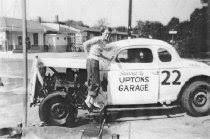
The track opened up in 1947. They ran as a ¼-mile dirt oval until 1954. The track has also been known as the Bowling Green International Raceway. I always get a kick out of places like Bowling Green, Kentucky calling themselves an “international” raceway. Bowling Green is a LONG way from any foreign country borders!
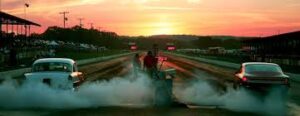
From 1955-1980 the track was a 1/3-mile asphalt oval. They also started figure 8 racing at BB in 1973. The track must have closed down after the ’80 season. In 1986 they re-opened. From what I can gather, as this report is posted in 2020, they don’t race stock cars at Beech Bend any longer. I don’t know when they stopped after my visit in 2001. They do continue to host drag racing at Beech Bend Park. They have been having drag racing here since the mid-50s.
In doing some online research about the history of Beech Bend Raceway Park I found this. Special thanks to Jonathan Jeffrey of Bowling Green University for sharing the following.
Bowling Green Stock Car Racing
Different types of racing at Beech Bend Park, with stock car racing being the fan-favorite in the late 1940s and 1950s. Beech Bend Park is known to many as an important component of Bowling Green’s emergence as a high~speed entertainment center.
Until recent years, stock car racing was a Southern sport. Those who partook in this sport were so~calledrednecks and moonshiners-at least that was the image promulgated by NASCAR in its early Jays. Today the stock car racing craze has exploded nationwide, and the sport downplays its moonshiner roots. That early rustic image may have been an advertising ploy because it certainly was not the foundation for stock car racing in Bowling Green. Numerous stock car racetracks popped up in the vicinity of Bowling Green and Nashville after the end of World War II. They were owned and promoted by businessmen looking to capitalize on the nation’s pent-up demand for entertainment after 15 years of Depression and war. Furthermore, people had money to spend, and no excitement competed with racing the family car.
The stock car drivers came from diverse walks of life far removed from the hillbilly or moonshiner element. In Bowling Green, for example, there were young men such as Tommy Smith, the son of a business owner and inventor, who went on to graduate from Georgia Tech and become a millionaire businessman; Marshall Love Jr., the owner of a photographic studio; and Larry Graham, a descendant of Kentucky’s honorable Judge Asher Graham, who became a U.S. Air Force officer during the Korean War, later relocating back to Bowling Green as a local businessman and farmer. Hugh Porter Causey, the young man who built the first stock car in Bowling Green, continues to this day to operate an auto wrecking business in the city. Lattney Upton, another car builder, was the great~grandson of Elijah Upton, a hero at the Battle of the Thames in the War of 1812 and the progenitor of a prominent farming family in Richardsville, Kentucky. Most, if not all, of the local drivers, came from solid family backgrounds that had no link to the mythologized moonshine racers of NASCAR fame, a reputation that seems to have attached itself to anyone who raced stock cars on dirt tracks in the sport’s early days.
In 1941, an enterprising man named Charles Garvin purchased a gently rolling section of land covered with beech trees located about 2.5 miles northeast of Bowling Green. The property, being used at the time as a dairy and farming operation, was situated in a big U~shaped bend of the Barren River. Its proximity to Bowling Green, combined with the cool shade of the beech trees and the quiet solitude of the slow~moving river, had made the area a camping and picnic haven from the long, hot days of summer since the 1880s. Locals have always called the place Beech Bend, and the name itself denotes peace and serenity; however, the stock car racing fever would soon change that, at least on Sunday afternoons.
Garvin saw the potential for more than just camping and picnicking. He soon renamed the area Beech Bend Park, charged 1O¢ admission, and initiated the gradual development of a complete amusement park. The first addition to the camping and picnicking activities was a live pony ride. A swimming pool in 1947, pavilions for dancing, and a large Ferris wheel quickly followed. Eventually, Beech Bend became one of the largest amusement parks in Kentucky.
On a summer day in the mid~1940s, three teenagers from Bowling Green, brothers Elmo and Wayne Guy and their friend Billy Hudson, headed their motorcycles toward Beech Bend. At the gate, Garvin collected his usuallO¢ fee, and the boys roared their motorcycles through the park’s dirt roadways. Entering a large meadow near the Barren River, the boys ripped through the grass and weeds, racing each other in a large oval, which gave them an idea.
When Elmo, Wayne, and Billy returned to the front gate, they asked Garvin if they could make a flat racetrack for their motorcycles in the meadow. Billy Hudson, whose father was the head of the Warren County Roads Department, said that he could get access to a road grader to carve out a track. Garvin quickly agreed but told the boys that they had to do the work. Garvin soon teamed up with Raymond McClard, the local Harley Davidson motorcycle dealer and a Bowling Green politician, and staged their first motorcycle race in 1946.
Garvin and McClard did not know it yet, but the real entertainment dollar in the years following World War II was going to be in stock car racing. Bowling Green was not yet on the racing map, but stock car racing was already taking root in towns throughout the region. Hugh Porter Causey, a young, local garage owner and car lover, decided to build a stock car that he could race in nearby Russellville and other surrounding towns. Going a step further, McClard tried, with limited success, to promote a track outside the town on the Russellville Road. Clearly, momentum was building.
As the 1940s drew to a close, Garvin and McClard believed that the time had come when the public was ready to support stock car racing in Bowling Green. They promoted their first stock car race at Beech Bend in 1948, the same year that witnessed the birth of NASCAR. Aware of Hugh Porter Causey’s interest in racing and the fact that he had built a race car, Charles Garvin called Causey and asked him to help assemble a group of people willing to build stock cars and support racing at Beech Bend. Causey was soon running advertisements on radio and in the local newspaper, the Daily News, inviting interested parties to contact him. He also used his own extensive network of mechanics and car aficionados to help him. According to Causey, “Pretty soon it seemed like everybody in Bowling Green was building a race car.”
Charles Garvin and Raymond McClard, supported by key men like Hugh Porter Causey, organized the Bowling Green Sporting Association to sponsor the races. Garvin also improved the one~third~mile track by adding a pit area, flagman’s and official’s booth in the infield, concession stands, and a grandstand. Before the first race, Garvin even announced that he was going to build a roof over the grandstand for the comfort of the fans. By mid~year 1951, all was ready.
The first race was announced for Sunday, August 5, 1951, with time trials beginning at 1:00 p.m. and the first of eight races scheduled to begin at 2:00 p.m. Admission was set at $1 for adults and 50¢ for children under 12 years old. The schedule called for four heat races, each consisting of six cars racing eight laps; an Australian pursuit race, in which cars line up single file (slowest in front to fastest in the rear) with cars being eliminated as they were passed; a consolation race; and an undisclosed special event in addition to the feature race. To ensure that they had a good field of cars, Garvin and McClard sent out invitations to drivers competing at neighboring tracks.
In an interview with the Daily News, Raymond McClard identified the local car owners and drivers expected to participate in the inaugural event as the following: Causey and Reynolds Garage, Tommy Smith, driver; Mayhugh Motor Company, A. W. Nolan, driver; Wingfield Auto Service, Marshall Love Jr., driver; and Wright’s Welding and Machine Shop, Elmo Guy, driver. McClard stated that several other businesses committed to participating that first Sunday included Wallace Motor Company, Cohron Motor Company, Upton’s Garage, Tunk’s Garage, Burch’s Golden Tip Service, and Dixie Garage.
The first race at Beech Bend Park was a resounding success. An overflow crowd of 2,500 people watched a field of 19 cars put on an exciting show, including five crack-ups, two of which were spectacular rollovers with no injuries. People from out of town dominated the events beginning with Elmer Tapp of Owensboro, Kentucky. He set the first time trial record at 25.3 seconds around the one~third mile dirt oval, with an average speed of 47.43 miles per hour. Bowling Green drivers Billy Hudson, driving for Mayhugh and McReynolds Motor Company, and Elmo Guy, driving for Wright Machine Shop, were the only local winners, winning a heat race and the Australian pursuit race, respectively. The unexpected high fan turnout prompted the Bowling Green Sporting Association to announce that racing would continue each Sunday afternoon until the onset of bad weather. The promoters also announced that they would construct an addition to the grandstands to accommodate larger crowds.
As the season wore on and the crowds became more enthusiastic, the racing brothers, Elmo and Wayne Guy, became the local drivers to beat. Elmo became the local favorite by finishing near the top each week to the more experienced out-of~town drivers. Finally, on September 30, 1951, Wayne Guy surprised Elmo by becoming the first local man to win the feature race; he made it a clean sweep by also winning his heat race and the Australian pursuit race that same day. In a 2003 interview, when asked what he liked about stock car racing, Wayne replied, «I just liked being there! And I always wanted to beat Elmo!”
With the weather changing, the Warren County championship was scheduled for October 14, 1951. This race would be open only to local drivers. According to the local newspaper, Wayne Guy was the designated marked man due to his surprising triple win two weeks earlier. Elmo Guy was also mentioned as a top choice to win. As it turned out, Elmo Guy was the Warren County champion, and Larry Graham was a close second.
On October 21, 1951, Beech Bend Park held the last race of the season, which was billed as the Regional Championship, with all drivers welcome. The championship race was extended to 25 laps. The Bowling Green Sporting Association announced that for the first time trophies would be presented by a special guest of honor, Miss Kentucky 1951, Dottye Nuckols. Again Elmo and Wayne Guy were considered the local favorites to cop the championship.
In races prior to the Regional Championship, however, another local driver, Larry Graham, a 22~year~01dstudent at Western Kentucky University, had been making a move toward the top. Graham had missed out on traditional sports in his youth due to a bout with polio, so he viewed stock car racing as a chance at a level playing field. Graham had raced Raymond McClard’s “The Thing” a few times but was looking for something with more power. Lattney Upton, owner of the Upton’s Garage No. 22, was looking for a driver. Graham knew the car had lots of power but considered the 1938 Dodge with the 1936 Cadillac V~8 something of a Rube Goldberg setup. It was a car out of the mainstream and had never been a winner; however, Graham decided to give the car a try.
Les Williams broadcast the race over local radio station WLBJ. In spite of all the out of town competition, the race was dominated by Elmo Guy, followed by Wayne Guy and Larry Graham. These three held off the field as the race approached the 20~lapmark when, suddenly, Elmo Guy got a flat tire. He continued to race but was losing ground as Wayne took over first place with Graham in second. Although Graham was pressing him, the race appeared to be a cinch for Wayne Guy until, with two laps to go, Wayne met Elmo’s fate as a tire went flat. Larry Graham vaulted past him to victory lane. Beech Bend Park’s inaugural season was over.
The fan excitement and support was so overwhelming that stock car racing at Beech Bend became a fixture until drag racing surged to the fore 10 years later. During the early 1950s, crowds of 7,000 became common as Garvin continued to expand the facilities.
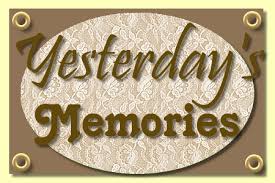
You might have remembrances about this track. If so, please feel free to share your memories in the comments section below. If you have any photos from back in the day, send them to me at Ranlay@yahoo.com. I’ll try to include them here.
Thanks for reading about my trackchasing,
Randy Lewis
World’s #1 Trackchaser
Peoria Old Timers Racing Club (P.O.R.C.) Hall of Fame Member
Kentucky sayings: Lord have mercy!
That’s all folks! Official end of the RLR – Randy Lewis Racing Trackchaser Report

